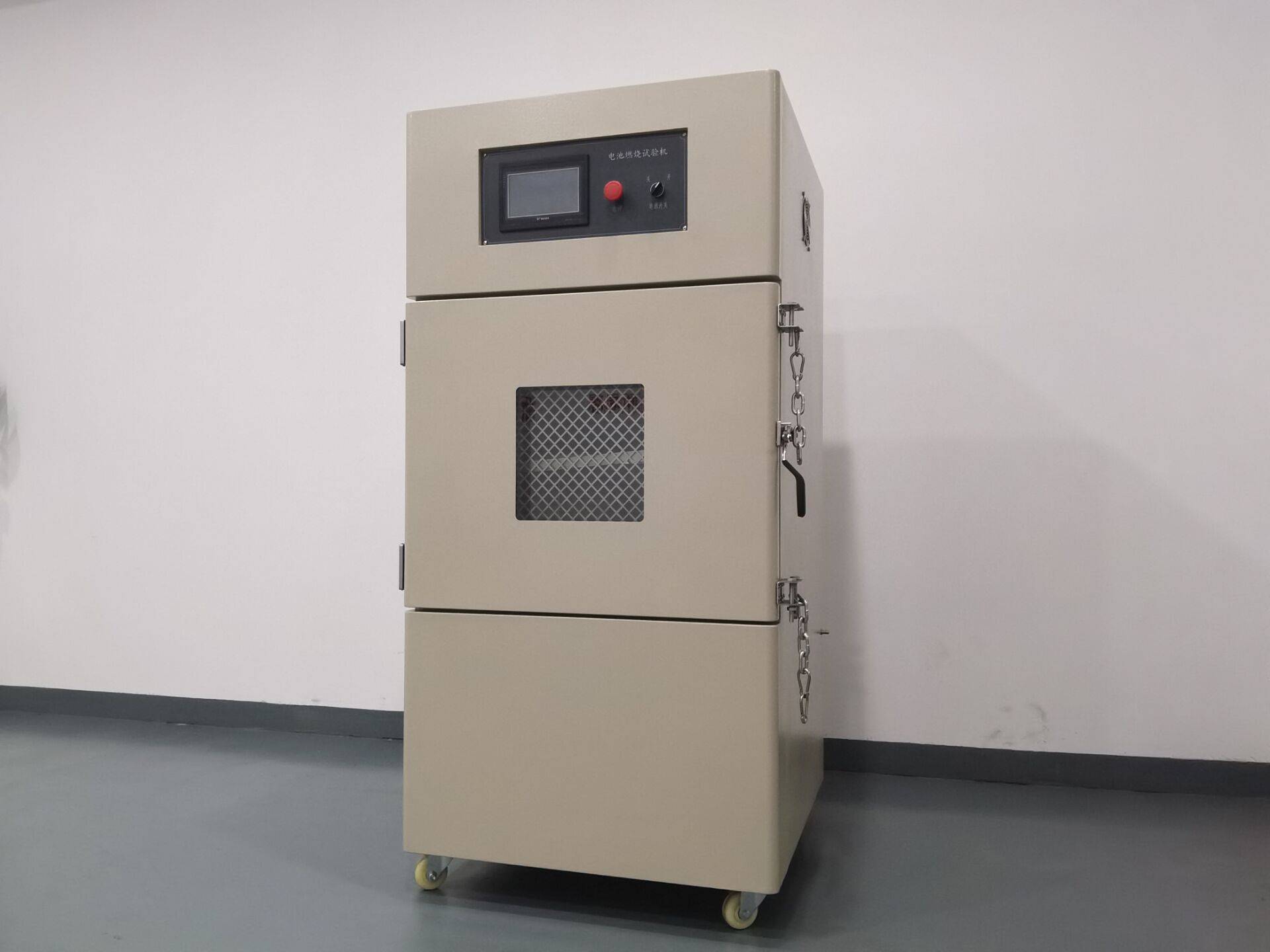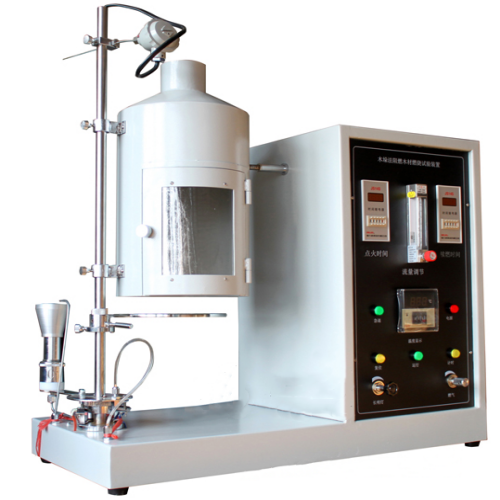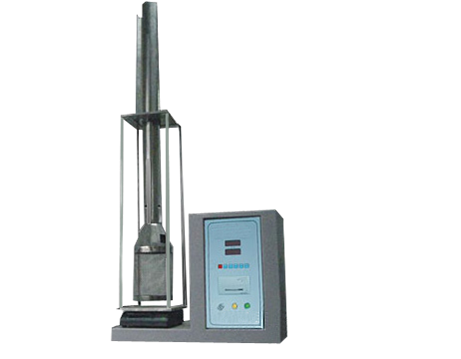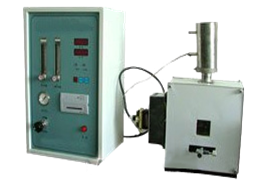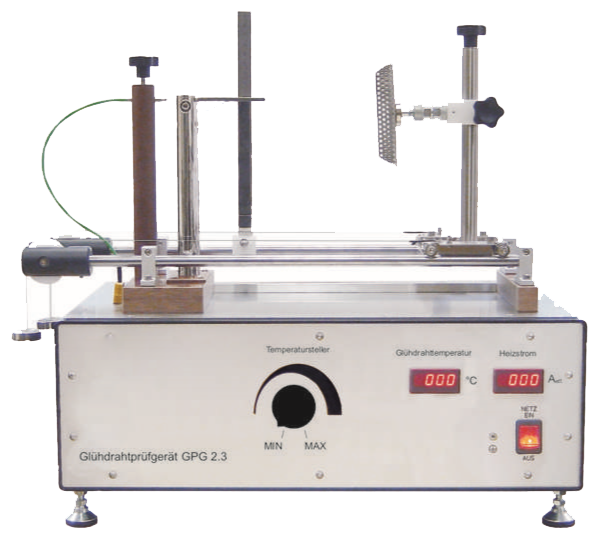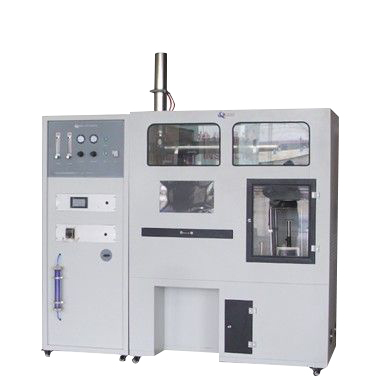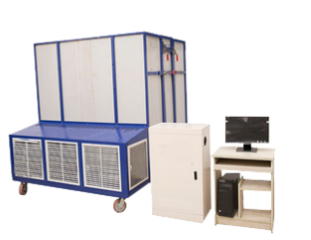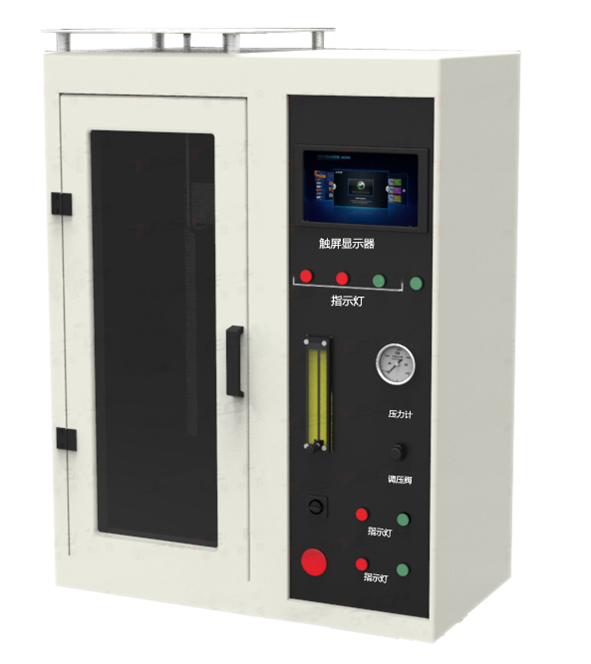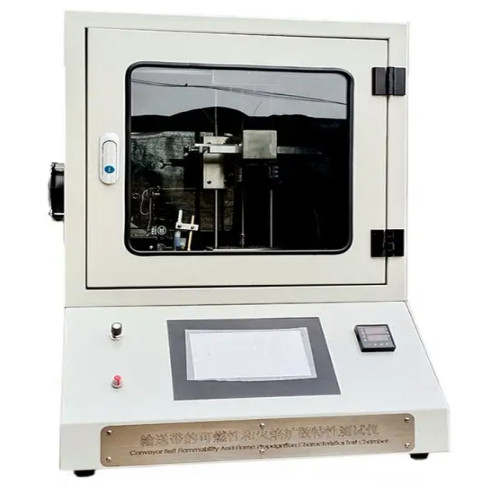Multipoint Simultaneous Pore Structure Analyzer
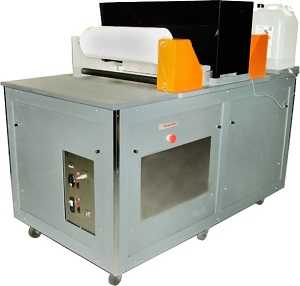
All the models of this instrument are similar. In one model the sheet to be tested is made to pass through two flat parallel plates. The top plate has straight through cylindrical holes to accommodate inverted cup shaped sample chambers and about two inch diameter samples. The bottom plate also has through holes aligned with the holes in the top plate. There are five chambers over the product width of about twenty inches. The chamber has gaskets at its bottom rim to make pressure tight seal with the sheet when the chamber goes down the hole in the top plate to make contact with the sheet. The top of the chamber is connected to the pressure transducer to measure pressure just above the sample. The sample chamber is also connected to gas line to supply pressurized gas to the chamber. The outlet of a small valve for discharging specified amount of wetting liquid on the sample in the sample chamber is allowed to pass in to the chamber. The valve is computer controlled to discharge the wetting liquid at the desired time.
Working Principle
Capillary flow porometry is used to characterize the pore structure. In this technique flow rate of an inert gas through the sample is measured in dry conditions as a function of differential pressure. The sample is wetted using a wetting liquid and the flow rate of the inert gas through the wet sample is measured as a function of differential gas pressure. Differential pressure yields pore diameter.
D = 4 γ cos θ / p
Dry and wet gas flow rates are used to compute other pore structure characteristics such as pore distribution and mean flow pore diameter. D = pore diameter, γ = surface tension, θ = contact angle, p = differential pressure. Dry flow rate is also used to compute gas permeability after Darcy’s law. Liquid flow rate measured as a function of differential pressure yields liquid permeability.
Applications
During the manufacturing process, many finished and unfinished sheet products of woven as well as nonwoven materials are produced as rolls. To be able to decide on the suitability of the product for various applications and to control manufacturing parameters for optimizing manufacture of product of desired quality, pore structure characteristics of the product along its width and the length are required. In order to be assured of the quality of the product multi point tests on the width of the product as a function of product length is desirable. Multipoint Simultaneous Pore Structure Analyzer is designed for such applications.
Features
· Properties are recorded as the sheet is getting rolled. There is a permanent record of pore structure characteristics of the entire roll
· If properties are not within acceptable limits along the width or the length, the unacceptable portions can be discarded rather than supplied to customers creating customer dissatisfaction and increased cost.
· Major faults detected early leads to modification of production control parameters so that more accept able products are manufactured.
· Wastage is minimized, cost is reduced, and production is optimized.
Working Principle
Capillary flow porometry is used to characterize the pore structure. In this technique flow rate of an inert gas through the sample is measured in dry conditions as a function of differential pressure. The sample is wetted using a wetting liquid and the flow rate of the inert gas through the wet sample is measured as a function of differential gas pressure. Differential pressure yields pore diameter.
D = 4 γ cos θ / p
Dry and wet gas flow rates are used to compute other pore structure characteristics such as pore distribution and mean flow pore diameter. D = pore diameter, γ = surface tension, θ = contact angle, p = differential pressure. Dry flow rate is also used to compute gas permeability after Darcy’s law. Liquid flow rate measured as a function of differential pressure yields liquid permeability.
Applications
During the manufacturing process, many finished and unfinished sheet products of woven as well as nonwoven materials are produced as rolls. To be able to decide on the suitability of the product for various applications and to control manufacturing parameters for optimizing manufacture of product of desired quality, pore structure characteristics of the product along its width and the length are required. In order to be assured of the quality of the product multi point tests on the width of the product as a function of product length is desirable. Multipoint Simultaneous Pore Structure Analyzer is designed for such applications.
Features
· Properties are recorded as the sheet is getting rolled. There is a permanent record of pore structure characteristics of the entire roll
· If properties are not within acceptable limits along the width or the length, the unacceptable portions can be discarded rather than supplied to customers creating customer dissatisfaction and increased cost.
· Major faults detected early leads to modification of production control parameters so that more accept able products are manufactured.
· Wastage is minimized, cost is reduced, and production is optimized.
Note:QINSUN is very in place for textile testing and quality control,we have our own textile testing lab. Our textile testing equipment and testing methods are in the leading position in the industry. We have passed the textile testing certification and iso textile testing standards issued by a number of testing,We can provide textile testing equipment pdf manual. Sufficient inventory, big discounts, limited time promotion, Order now!
Leave Message Get Price



